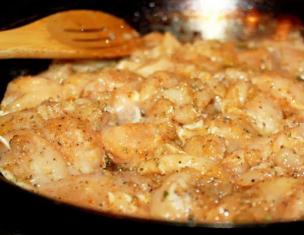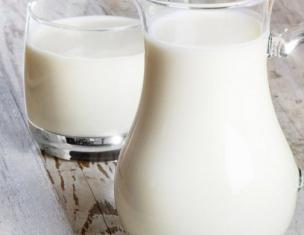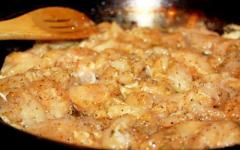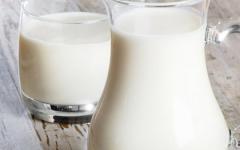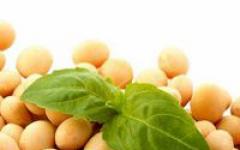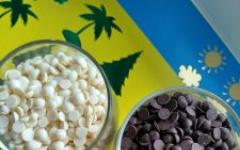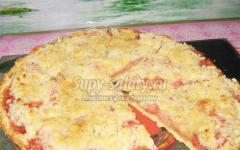Much has been said about the benefits of cocoa butter. But this product is quite expensive, it is characterized by unstable properties, depending on the cocoa variety. Therefore, in the confectionery industry, cocoa butter equivalents are often used - vegetable fats containing the same fatty acids. This allows you to reduce the cost of production and to avoid unnecessary difficulties in the preparation of confectionery.
Substitutes are divided into lauric and non-lauric. It all depends on the composition.
Cocoa butter substitutes non-temper non-lauric type have in their composition a mass fraction of fat not less than 99%. They do not need tempering. The basis for the manufacture are modified vegetable oils. Contain no more than 1% mass fraction of lauric acid, may have food additives and other ingredients.
An even more vivid example is labeled NOT hydrated fat. Obviously, these two words have nothing in common except similarity in sound. Hydrogenation and hydration are also chemical terms, but they are usually used for other chemical reactions, and not to enrich the fat with hydrogen atoms. The lack of information has led to the widespread use of these fats and now the range of products containing hydrogenated fats is huge and no one can say for sure exactly what products contain.
A similar type of fat used in the manufacture of soap. Memories of dirty children's mouths and hands with chocolate are no longer relevant. The reason is the absence of cocoa butter in most chocolate products. In addition to chocolate and puff pastry, hydrogenated fats are widely used in the production of ice cream, waffles, chips and sweets of all kinds. Recently, there has been a tendency for yogurt producers to increase with the use of hydrogenated fat to improve the density and structure of the well-known product that we all want at the national and international level.
- the process of melting chocolate or substitute, recrystallization and reheating to the appropriate temperature. Due to this, the icing acquires the necessary fragility, beautiful shine and melts well in the mouth.
Cocoa butter substitutes non-temper of lauric type have a mass fraction of at least 99% of fat, do not need tempering. Made on the basis of modified vegetable oils. The mass fraction of lauric acid is not less than 40%. May include nutritional supplements and other ingredients. By their manufacture coconut or palm kernel tropical oils are used.
Where to get information? On most yogurt cups, only the content of cow's milk and lively yeast without labeled preservatives and thickeners appear, which are the same as the type and quantity. Much has been written for the dangers of these fats, but often this information is lost against the background of loud commercials of margarine producers or the words “no cholesterol”. Few people know that cholesterol is something without which people fail when, by supplying a sufficient amount of food, the body itself begins to synthesize it in fact, these are lipoproteins that carry out transport activities in the body and are divided into several of the most famous of which are two. The so-called bad and good cholesterol. One is responsible for delivering substances to the organs, while others on the way back, which are already eliminated toxins back through the blood.

The advantages of cocoa butter substitutes of lauric type
- No need for tempering. Substitutes crystallize immediately in a stable form, provide a beautiful shine and flavor of the glaze, chocolate structure and shine.
- They have a melting curve similar to cocoa butter. Products on cocoa butter substitutes of lauric type have pronounced melting sensations during consumption. It helps to achieve stable performance when working with the glaze.
- Contain the minimum amount of trans fatty acid isomers.
- Indispensable for long-term storage products.
- The most budgetary alternative to cocoa butter.
- Helps to achieve high whipping and fluffiness vegetable cream.
- Can be used in summer. What is important in the manufacture of ice cream, chocolate coating and tiles.
- Excellent organoleptics in the body of candy and glaze. This allows you to have a “chocolate” crunch when breaking up, to form stable chocolate candy cases, to glaze pastries.
A fly in the ointment: disadvantages of a lauric substitute
Despite all the advantages, cocoa butter substitutes of lauric type have their disadvantages. With the wrong production technology, the confectionery product may harden or get a soapy taste. It is not recommended to abuse products that have palm oil in their composition for young children with obesity, salt deposition, diseases of the heart and blood vessels.
They carry out this activity due to their quality associated with substances. These two lipoproteins have reference values that do not very well occur either in the down or up line. for this reason, it is often speculated by producers and retailers of hydrogenated fats, like cholesterol is found in animal products, rather than plants.
In this line, we must also describe the negative qualities of hydrogenated fats, and from there you can judge the “benefit” of using them in food. First, there is a danger of destruction of the newly formed molecule and the separation of some additional added hydrogen atoms, leading to the so-called free radicals, which, in turn, are easily associated with other substances or similar to becoming a carcinoma. It is not difficult to imagine what is happening with this fat. It sticks to the inner part of the intestine, forming an oil layer and does not allow their normal function.
Coming to the store for everyday purchases, we often see that the cost of familiar foods can vary greatly. Looking at it, we understand what the matter is: the butter is not butter at all, but vegetable spread, juice — nectar, and cheese — a cheese product. The next logical question that arises is: what is the difference between expensive and cheap versions of goods, and will such savings not result in health problems?
The only way to get rid of them is to feed more fibers rich in fiber and fiber, but this does not save us. Because there is always a period of cleansing of the body, if it is possible, so that it happens completely. During this period, we are threatened by something even more dangerous, for example, the opportunity to drink hot tea, coffee or a favorite of many Bulgarian poppy brooms. Then the unsuspecting person drinks his morning coffee and does not understand that this can be fatal for him. This combination of hot drink and gastrointestinal fat is really lethal because it melts as a result of the higher temperature of the drink and is absorbed by the intestines in the blood.
Non-dairy milk
Milk, cheeses, yogurts, cottage cheese, sour cream and ice cream are united by the fact that they are all made from milk and can not contain a single gram of vegetable fat. A product that contains both milk fat (in an amount of at least 50%) and vegetable oil is already called “milk-containing”. A product that contains less than 50% milk fat can not be treated as dairy. In fact, it is analogous to vegetable fat.
Today, there are no technical regulations for such products, which are used by unscrupulous manufacturers, calling them "cheese-like", "combined", "pickle". The consumer usually does not pay attention to such names, since they are written in small print, and, rejoicing at the low price, considers the product to be cheese, butter or ice cream.
These batches are then formed in the blood vessels. Often the cause of a heart attack and stroke is a blockage of a blood vessel. Sometimes we are talking about amputation of the limb as a result of such an obstruction. Because the food industry is one of the largest taxpayers. In addition, many members and managers of various health inspections are former leaders of the food industry.
Therefore, you should know that economic interest is primarily other values, such as health! Indeed, everyone has the right to opinion. This can not be a criterion of truth, not to mention the fact that the above-mentioned Anonymous Sounds like a child from kindergarten to which they did not pay enough attention, and now almost everything is crooked. In articles intended for a wide range of readers, mistakes are unacceptable! We are again monkeys, of which well-developed states sell poison - they die.
Milk, cheeses, yogurts, cottage cheese, sour cream and ice cream are united by the fact that they are all made from milk and can not contain a single gram of vegetable fat.
Palm oil is several times cheaper than butter, so changing from one to another, manufacturers have the opportunity to save significantly. Such products are cheaper than dairy counterparts, however, in terms of nutritional value, they are practically not inferior to natural dairy, so not very wealthy customers get the opportunity to form a full-fledged food basket with the lowest costs.
We deserve to be the number one inflation in Europe, this is a state, and without this we are ashamed of it and will strive to please producers and traders so that they stay in hospitals. That for America and other civilians is absolutely wrong. The more the economy develops, the more consumers are exposed to all sorts of food distortions. In search of lower prices to increase profits and at the same time maintain market share, complex market mechanisms achieve a global decline in food quality.
I don't have specific information about aspartame, but Americans eat far worse food than we do. The question of personal choice and literacy is what we eat. There is everything in the world - mayonnaise, butter, pastries, croissants, cookies, cakes and EVEN IN BLACK MILK. Perhaps the author should have explained that the concepts are different: hydrogenation, hydration, hydrogenation, hydrolysis, etc. So an unprepared reader can make a difference!
Good or bad?
In fact, instead of milk fat, they use not palm oil, but special milk fat substitutes, the manufacturers of which combine the ingredients so carefully that the composition of fatty acids becomes almost identical to the composition of milk fat. Such fat does not differ in taste and melting point, so the taste of the product does not suffer. There is nothing wrong with their health. Natural milk fat is a significant source of fat-soluble vitamins A and D, which are not found in vegetable fats, but in the latter there is a lot of vitamin E. Some studies suggest that it is inappropriate to use palm oil as part of breast milk substitutes for infants, but for adult consumers it is not applies
The only complaint to the manufacturers of such products is the use of a small, hard-to-read font: it is often difficult to read the actual name and composition of the product. And making a purchase, the consumer must know for sure - what exactly he buys.
My family cooks a lot of food: yogurt, pastries, mayonnaise, lutenitsa and others. It is much more laborious, but at least we know what we eat. It is interesting why there are no published data on how many decades these “fears” consume and the average life expectancy has increased or decreased for this pet.
Palm oil is dangerous and unhealthy, especially for children. The European Food Safety Authority has a clear opinion and is the result of its extensive and in-depth study, which was completed in early May of this year.
Kefir product

Quite a different story - kefir product. Unlike the previously mentioned products, it does not contain vegetable fats or proteins. It's all about technology. Kefir is fermented with live kefir fungi representing a symbiosis of lactic acid microorganisms and yeast, and dry ferments consisting of the same lactic acid microbes and yeast are added to the kefir product during fermentation.
The study showed the presence of "dangerous genotoxic ingredients" in quantities exceeding permissible limits. Attempts to completely stop using palm oil, which was present almost everywhere, have grown significantly in Italy in recent months, leading to the fact that some regions have taken urgent measures.
Removing it from public kitchens. At the same time, a law was passed throughout the country to revise food labels. It is no longer possible to make a significant and brief description of "vegetable fats," and it is necessary to indicate their exact origin - in most cases - palm, rapeseed or sunflower.
Good or bad?
Such technology is simpler and cheaper for the manufacturer, and does not particularly affect the nutritional value. But the taste of such a product to true connoisseurs of kefir may not seem so refined.
Spreads

The name of the fat product, in which there is at least a small part of non-dairy fat, you will not find on the package immediately. Most likely, there will be a kind of epithet of the middle kind - “Krestyanskoe”, “Baked”, hinting at the fact that before you is “like butter”. However, if in the product of milk fat more than half, then this is a creamy vegetable spread; from 15 to 50% - vegetable and creamy; less than 15% - vegetable and fatty. The use of the word "butter" in the name of the spread is prohibited!
Who can replace palm oil in nutela? Despite all the health risks that palm oil brought to her, until now, finding a substitute for him in the food industry was a problem because of the undeniable fact of its low price and its belonging to the category of so-called solid fat, which resembles oil. In other words, it gives food a creamy flavor, without affecting the taste, which avoids the old harmful process of hydrogenation of fats - this is margarine - this is its fruit.

It seems, however, that time has changed thanks to Mide - the starter Perugia patented a revolutionary product. The idea is Filippo Ferrari, the owner of an agricultural company engaged in the production of olive oil. So everything begins again with olive - the heart of Italian and Mediterranean cuisine. Thanks to this inventive Filippo creates a new fat for the food industry.
Good or bad?
The most common spreads on store shelves usually consist of a mixture of butter and various vegetable fats, that is, it can be said of natural ingredients. And in its nutritional value, including the content of unsaturated fatty acids, spreads usually exceed butter. Among the spreads, there are even those that can be called a healthy food product. This is how they differ from margarines. In the latter, as a rule, there are hydrogenated fats that are extremely unhealthy. It is worth noting that, unlike natural butter, spreads often contain preservatives. But not always, therefore, carefully reading the information on the composition and nutritional value of the spread, if desired, you can choose a completely useful and inexpensive product.
This is a cream of vegetable oil, which can be used instead of palm, margarine or butter. It will be called Cremole and will be made from olive oil, cocoa butter, water and sunflower lecithin. The new product must have excellent nutritional values - it will be saturated with polyphenols and vitamin E and will not contain animals and hydrogenated fats, preservatives or allergens. It will be suitable for vegetarians and people with food intolerance to gluten, milk and eggs. And no ingredient in it will contain GMOs.
Spreads are usually superior to butter in their nutritional value, including the content of unsaturated fatty acids.
Meatless sausage

Trying to reduce the cost of production, manufacturers use meat substitutes in sausages. They can be divided into two groups: useful, not reducing the nutritional value, and harmful. It is quite legal to use the surrogates of both groups if they are indicated on the label. True, not all manufacturers write "honest" composition of products. According to Roskontrol, up to 80% of sausage products turn out to be counterfeit.
One of the great advantages of the new culinary discovery is that it will reduce the fat content in the recipe by 20%, which will facilitate digestion. Every day you can find information about the new and new benefits of coconut oil, which can be used both in front of a mirror and in the kitchen. And did you know that you can also use it for healthy baking delicious pasta and sweets?
Here are some short reasons to make it an excellent substitute for the traditional ingredients you use for this purpose, such as butter and cow oil.
- Vegan is much healthier for the heart oil.
- Its taste is really wonderful.
Good or bad?
Useful surrogates are poultry, soy protein, vegetable fiber and starch. Adding vegetable fiber or starch, contrary to popular belief, does not reduce the nutritional value of sausage, but, on the contrary, makes it more balanced.
The substitutes that degrade the quality of the final product include:
Because coconut oil is solid at room temperature, it is the closest replacement for cow butter in recipes. If you replace the oil with coconut oil, use the same amount in solid form at room temperature. If the oil is used in the recipe you follow, melt the coconut oil and add the same amount as described. Be careful: thaw very quickly.
What baking is best done with coconut oil and why?
Coconut oil works great on cakes, cookies, cakes, pies and frosting - especially for tropical, chocolate or fresh citrus fruits. You can break coconut oil with sugar when you start making a cake and add it to your frosting. Coconut oil adds more shine and a thicker texture than real chocolate.
- collagen protein (protein from meat production waste is harmless, but of extremely low biological value, it is also “animal protein”, it is also “protein stabilizer”, it is also “pork skin emulsion” - with the systematic consumption of such meat products is not far and to deficiency of essential amino acids;
- poultry meat boning (contains a lot of collagen, bone fragments; its nutritional value is lower than that of poultry meat, impairs the taste characteristics of the product due to the smell of oxidized fat and solid inclusions);
- liquid (water) in the form of a solution of water-holding agents, such as phosphates, carrageenan, gums, etc. (it is clear that water is cheaper than meat; and phosphates, moreover, are in excess harmful to health - violate calcium metabolism).
A bar instead of chocolate

Confectionery tile is an analogue of chocolate, which usually has cocoa powder, but here fat, instead of cocoa butter, is represented by cheaper substitutes based on other fats. Today cocoa butter substitutes are widely used by manufacturers of various sweets - it is important to know that such candies are not called chocolate sweets. The label will be written simply "candy."
Good or bad?
At least it's not as tasty as chocolate. Less in this product and antioxidants, and theobromine alkaloid, responsible for the selection of the "hormone of happiness." If we talk about the effect of such fats on health, then you need to keep in mind that cocoa butter substitutes are different: lauric and non-lauric types. The former are less similar to cocoa butter in their physical and organoleptic (taste) properties, but the latter may contain unhealthy hydrogenated fats containing trans fatty acid isomers. Therefore, choosing sweets, be sure to read in the composition, which fats are there. If it is hydrogenated (partially hydrogenated) fats, then it is better to refuse such a product, as well as sweets containing fat with an unspecified composition (for example, labeled as "confectionary fat", "vegetable fat" or "cocoa butter substitute" without concretization of the composition).
Nectar

Nectar is a drink that is produced by mixing juice or puree with water with added sugar. In accordance with the technical regulations, the minimum content of natural ingredients in nectar is from 5 to 20%, depending on the specific type of fruit or vegetables. In principle, it is impossible to make juice from many fruits in industrial conditions - only nectar: plum, cherry, cherry, banana, peach or apricot.
Good or bad?
Both juice and nectar today are made from the same concentrate (basically, it is the restored juices and nectars that are present on the shelves of stores today). But if just enough water is added to the juice to restore it, then more is added to the nectar of water. And all would be fine, but the manufacturers of nectar, so that it was not too watery, still bring the dry matter content to the values characteristic of juices, adding ordinary sugar and citric acid there. And if for different fruit juices a unique composition of sugars, organic acids and vitamins is characteristic, then there is much less in nectar, but as many calories. Moreover, in terms of added sugar, these are the so-called empty calories. Summing up, we can say that nectar is a complete food product, which is inferior in nutritional value to juice just as much as it is cheaper.



